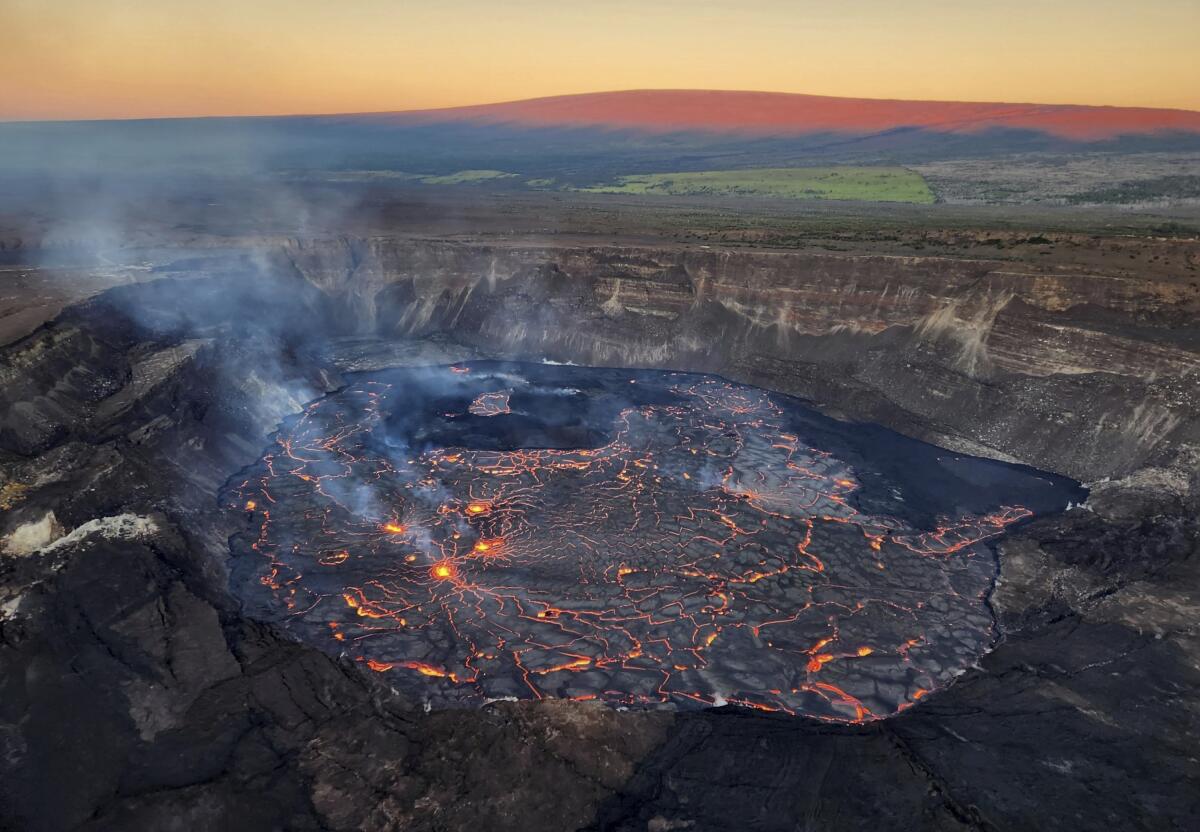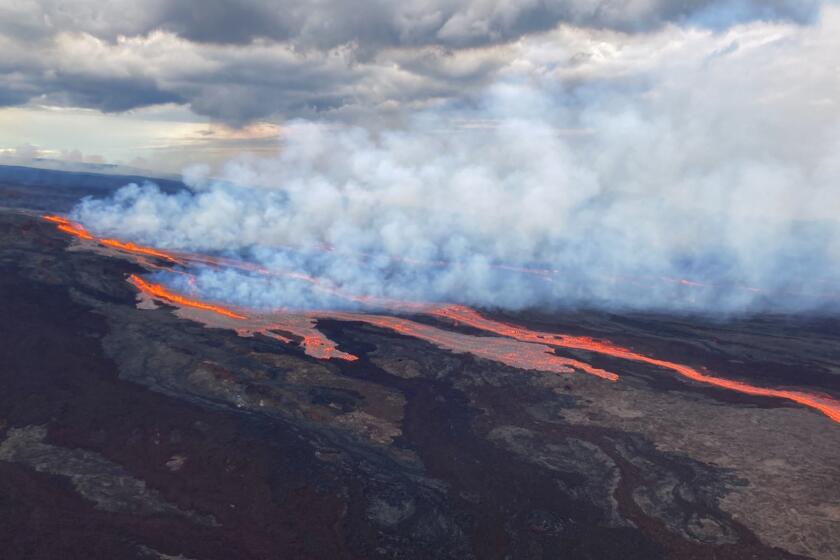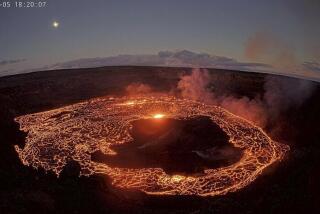Latest eruption of Hawaii’s Kilauea stops after 61 days

- Share via
HONOLULU — The latest eruption at Kilauea’s summit on the Big Island of Hawaii has paused after 61 days of volcanic activity.
Scientists at the U.S. Geological Survey’s Hawaiian Volcano Observatory said Tuesday that lava was no longer flowing on the crater floor of Halemaumau, where all recent volcanic activity had been confined, Hawaii News Now reported.
No significant changes have been observed along the volcano’s rift zones. Scientists on Monday observed small “ooze-outs” of lava flowing sluggishly in the lava lake.
Officials said that activity diminished in the afternoon and that, by Tuesday, there was no active lava in the crater.
Hawaii’s Mauna Loa, the world’s largest active volcano, has erupted. Officials said it wasn’t immediately threatening communities, but people were warned to be prepared.
The USGS said the reduction in activity was related to the “larger deflationary tilt drop” that began Feb. 17, a common process at Kilauea in which the ground deflates for hours or days. The drop in pressure can then cause eruptions to diminish.
Kilauea began erupting again Jan. 5 after scientists detected a glow within Halemaumau Crater. The latest eruption started after a nearly monthlong pause in activity.
Kilauea is one of the world’s most active volcanoes. A 2018 Kilauea eruption destroyed more than 700 homes.
Before the major 2018 eruption, Kilauea had been erupting since 1983, and streams of lava occasionally covered farms and homes. During that time, the lava sometimes reached the ocean, causing dramatic interactions with the water.
More to Read
Sign up for Essential California
The most important California stories and recommendations in your inbox every morning.
You may occasionally receive promotional content from the Los Angeles Times.











